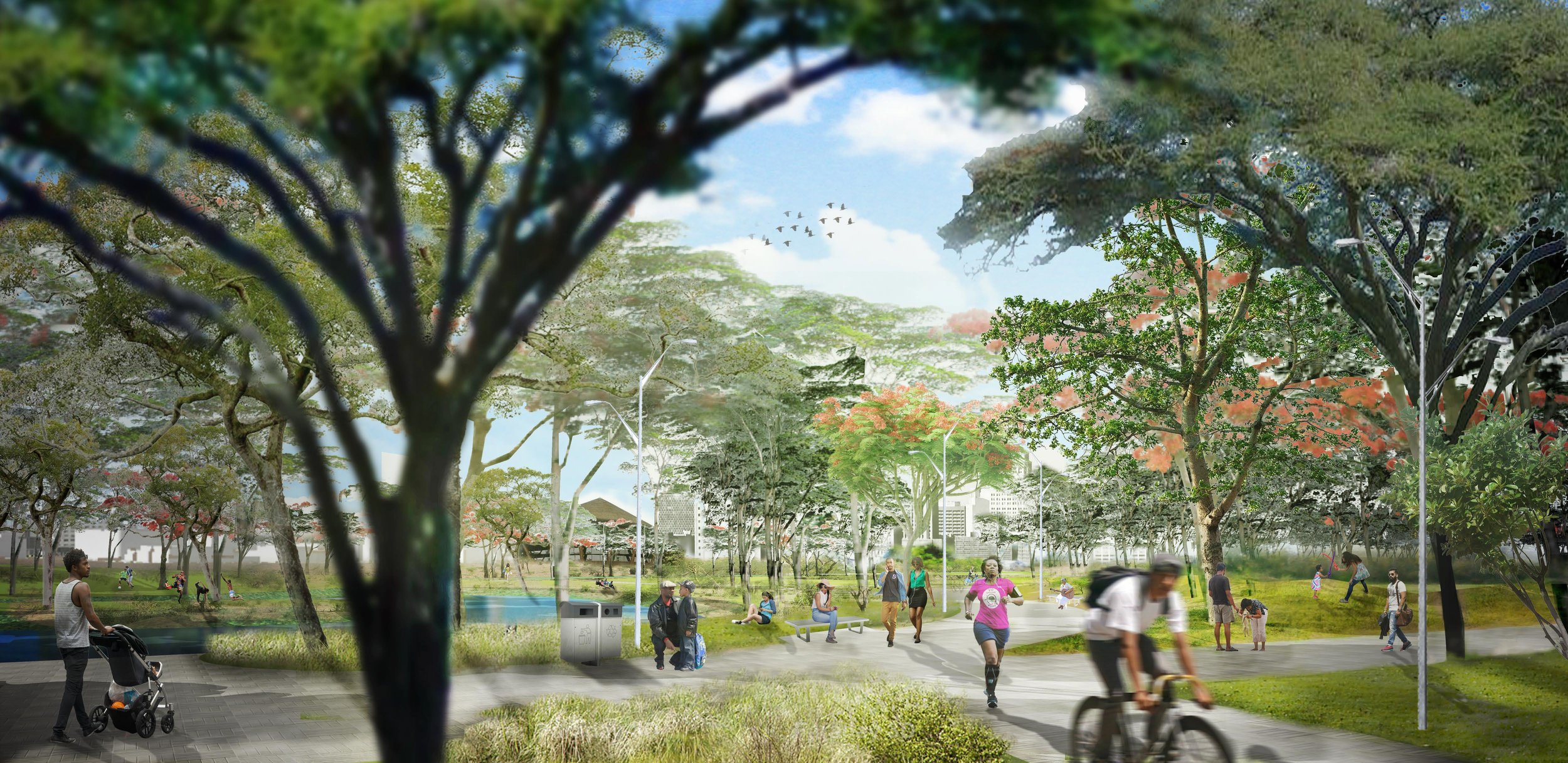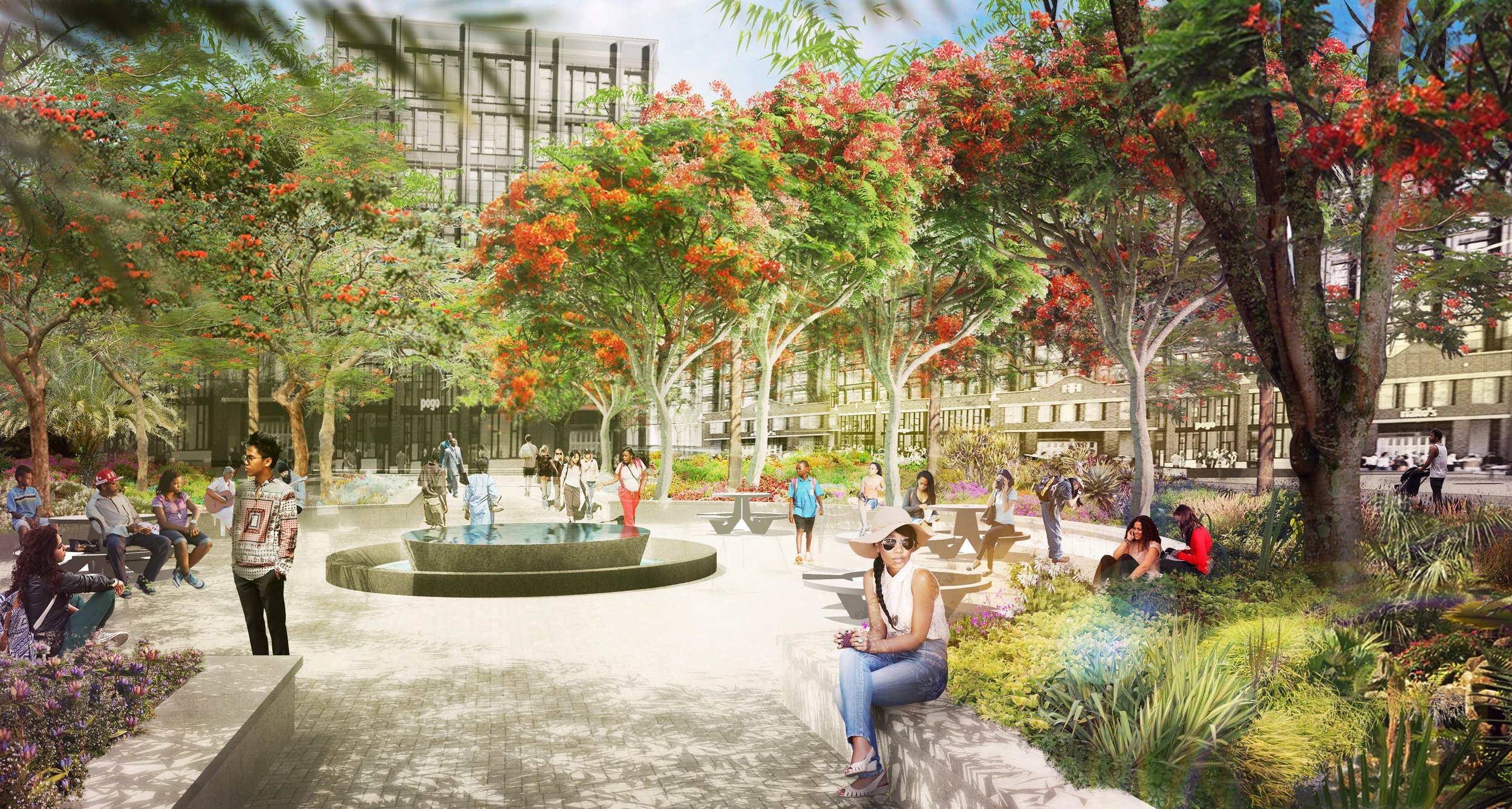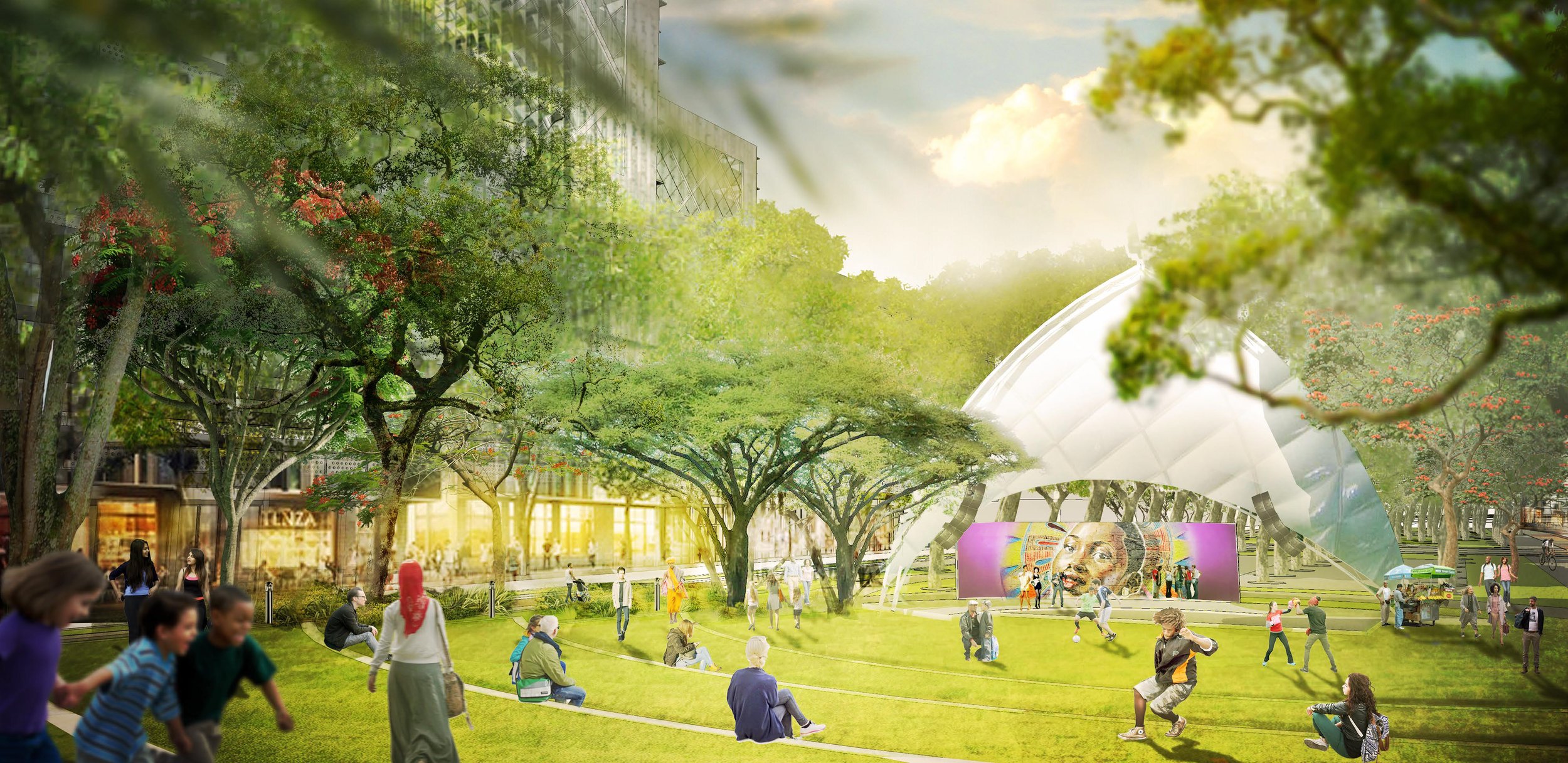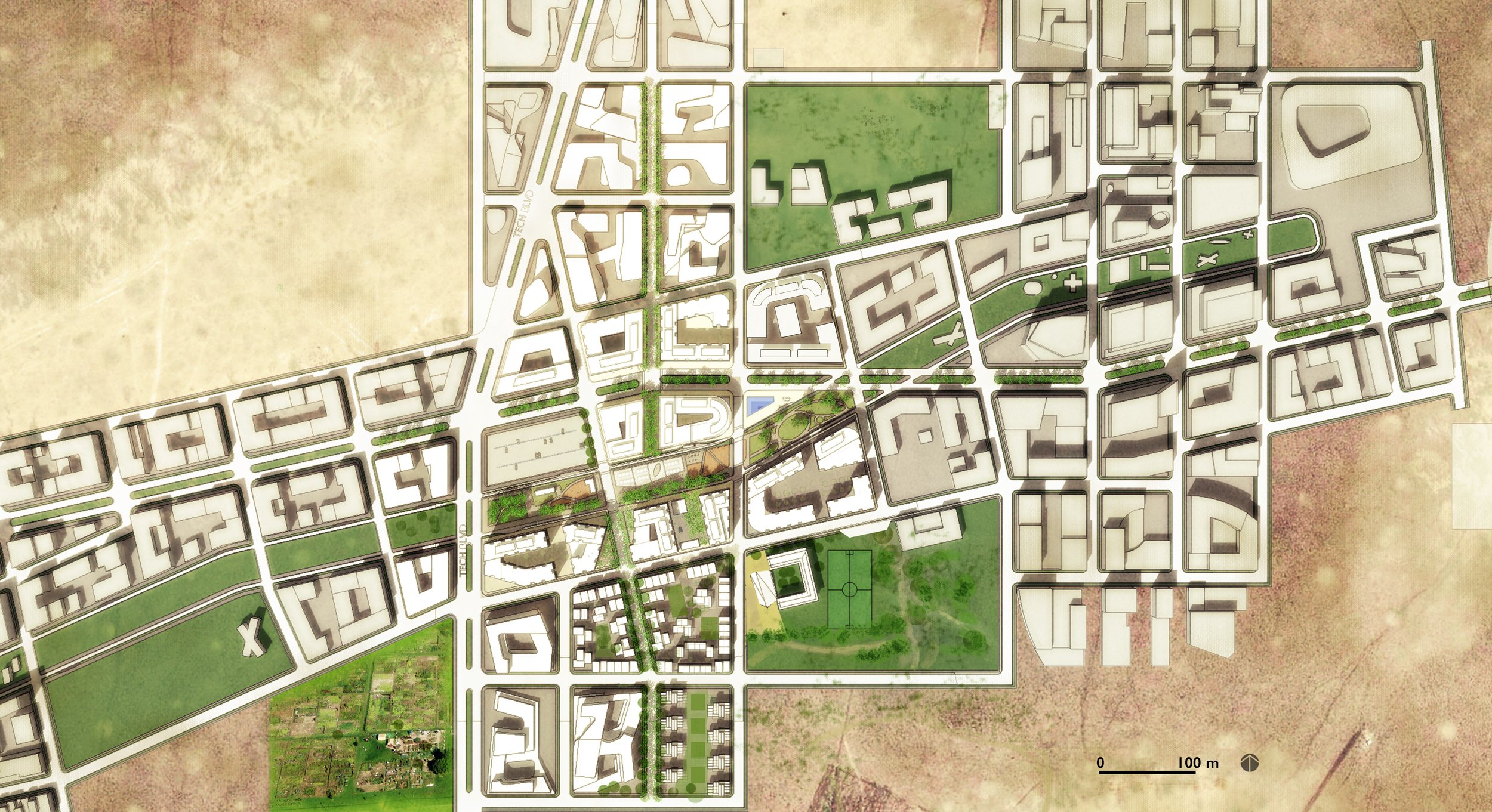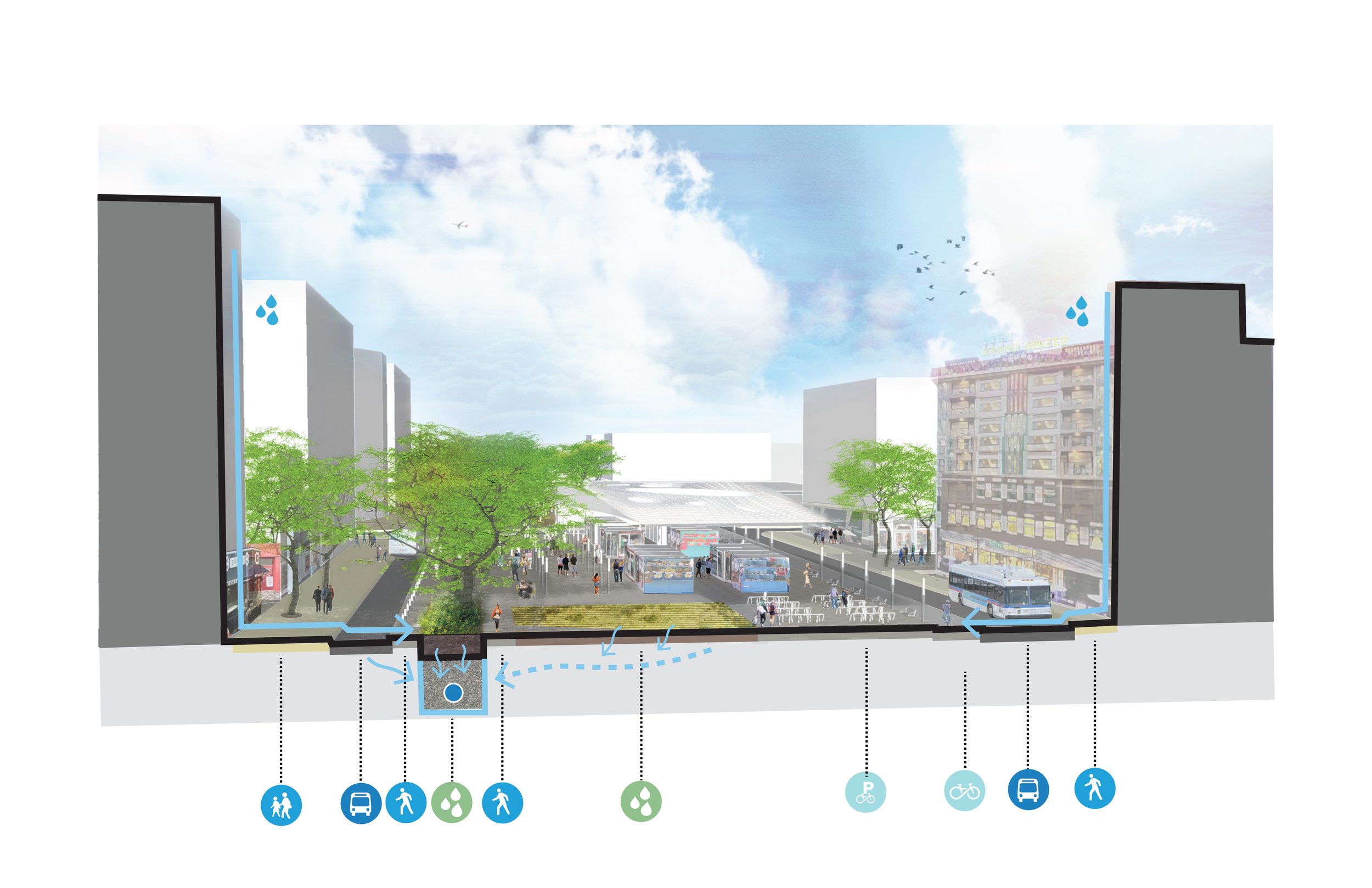Konza Technopolis
Konza Technopolis is a flagship Kenya Vision 2030 project to advance growth and prosperity for Kenyans. The city is a strategic investment in Kenya’s growing ICT sector and when completed, will be home to leading companies in education, life sciences, telecom, and BPO/ITES. Envisioned as a world-class technology hub situated within the East African savanna, Konza merges the values of technology, sustainability, and local diversity. Didier Design Studio worked collaboratively with engineering firm Tetra Tech and OZ Architecture to develop the Parks and Open Space Design Guidelines, the Streets and Mobility Design Guidelines, and the University Design Guidelines for the Konza Technopolis Development Authority (KoTDA).
-
The vision for Konza’s Parks and Open Space integrates a wide range of diverse types of outdoor spaces staged within walking distance for city dwellers. The design guidelines and overall framework plan respond to the unique characteristics and constraints of the region -- particularly water scarcity, high average temperatures, and brief periods of extreme precipitation. Our strategy includes an integrated stormwater management system, relies on native and drought-tolerant plants, and takes advantage of opportunities to increase urban biomass and mitigate heat island effects within the city. The overall vision is one that embraces sustainable growth while carefully considering local culture and ecology to foster a vibrant public realm with a unique sense of place.
The Parks and Open Space Framework Plan provides a coordinated and well-defined layout and distribution landscape types within Konza Technology City. Informed by land use and the overall city master plan, each space is programmed in response to overall character, densities, and uses of adjacent city transect zones. The 10 distinct landscape typologies together comprise a diverse and cohesive system, offering park and plaza areas of high activity and multiple uses, as well as preserved open space in areas of less density or activity for urban agriculture, large recreational areas, and passive or restorative landscape areas to preserve native habitat and retain stormwater.


